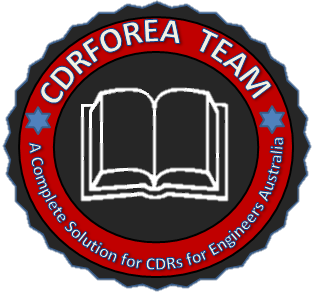Electrical Engineering Draftsperson Skill Assessment: A Full Guide for Aspiring Migrants
Australia’s famous Sydney Opera House symbolizes opportunity and fresh starts. If you’re an electrical engineering draftsperson dreaming of a new life Down Under, the first step is mastering the Electrical Engineering Draftsperson Skill Assessment. This official process confirms that your education and drafting skills meet Australian standards, and it’s required before you apply for a skilled visa.
In this friendly guide, we explain who qualifies as an electrical draftsperson, what the Engineers Australia assessment involves, what documents you need, and how to prepare a winning Competency Demonstration Report (CDR) with well-crafted Career Episodes. By following these steps carefully (and avoiding common pitfalls), you’ll be on your way to a successful skills assessment and the chance to live and work in Australia.

What Does an Electrical Engineering Draftsperson Do?
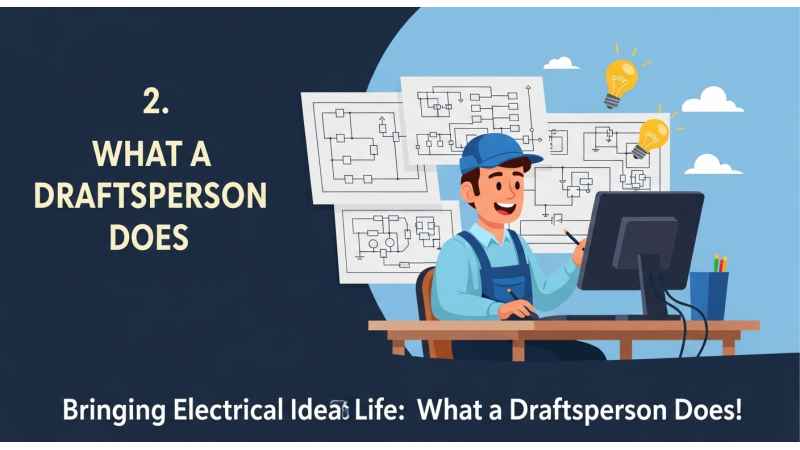
An electrical engineering draftsperson is a technical specialist who translates engineering ideas into detailed drawings and plans. In practice, this means preparing wiring diagrams, circuit layouts, and power system schematics under the guidance of engineers.
Key tasks often include:
-
Using CAD software (e.g., AutoCAD) to create electrical plans for buildings, factories, or substations.
-
Drawing schematic wiring diagrams and circuit board layouts.
-
Assisting senior engineers by converting technical designs into construction-ready blueprints.
-
Ensuring all designs comply with safety standards and regulations.
-
Compiling documentation and installation manuals to support electrical construction or maintenance.
An electrical circuit schematic—like the one above—illustrates the detailed drawings and diagrams an electrical draftsperson prepares during design and documentation.
According to the official ANZSCO description (Australian & New Zealand Standard Classification of Occupations), an electrical engineering draftsperson “prepares detailed drawings and plans of electrical installations and circuitry in support of Electrical Engineers and Engineering Technologists.” In short, you’re the specialist who creates the precise diagrams that bring electrical engineering projects to life. This role is listed on Australia’s skilled occupation list (ANZSCO Code 312311), meaning that qualified people in this job can immigrate under skilled visa programs.
Overview of the Skill Assessment Process
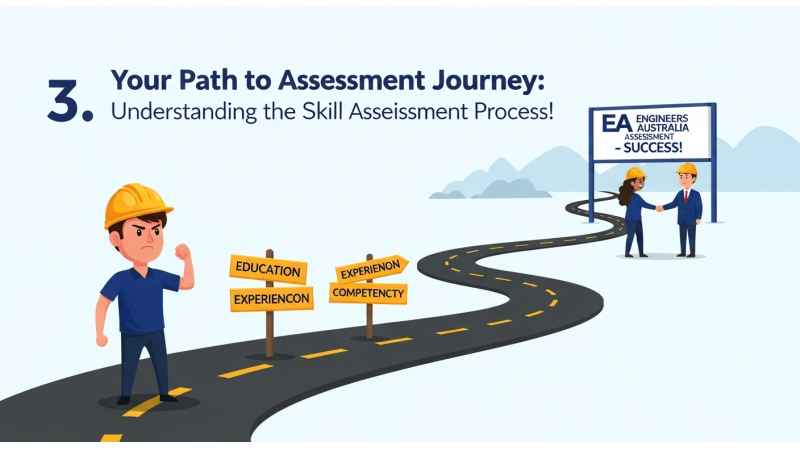
To migrate as an electrical draftsperson, you must pass the Engineers Australia skills assessment. Engineers Australia (EA) is the authorized assessing authority for engineering occupations. This means EA will evaluate your qualifications, experience, and competencies to ensure they match Australian requirements.
In most cases, especially if your degree is not from an EA-recognized accredited program, you will need to prepare a Competency Demonstration Report (CDR). The CDR is a portfolio document that demonstrates your engineering knowledge and capabilities through real project examples.
The CDR has three main components:
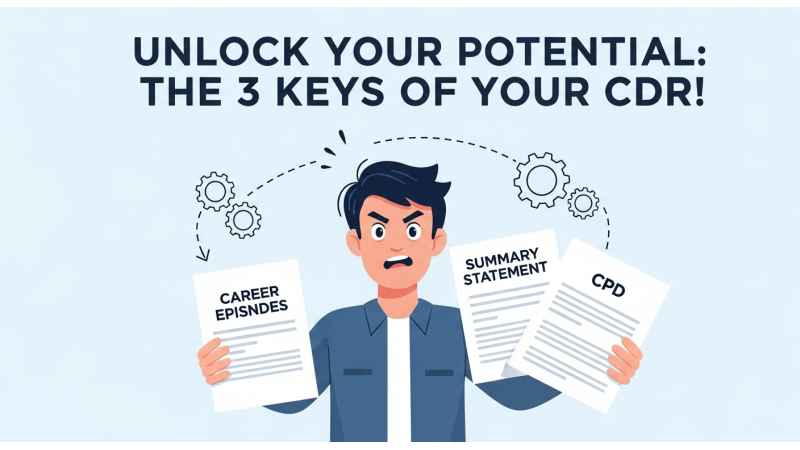
-
Career Episodes (CEs): Three detailed narratives, each describing a specific engineering project or task you undertook. These show exactly how you applied your drafting skills and solved technical problems.
-
Summary Statement: A table that links paragraphs from your Career Episodes to Engineers Australia’s competency elements, proving you meet each required competency.
-
Continuing Professional Development (CPD): A list of training, courses, workshops or seminars you have attended since graduation to keep your skills up to date.
You can only apply for a skilled visa (such as subclasses 189, 190, 491) after obtaining a positive migration skills assessment from EA. In other words, you’ll need that CDR-based assessment outcome letter before the Australian immigration authorities will even consider your visa application.
Engineers Australia – Your Assessing Body
Engineers Australia is authorized by the Australian government to conduct migration skills assessments for engineers. This prestigious professional body sets the standards for engineering in Australia. During the assessment, they will review your educational credentials and work history, and in the CDR pathway they’ll examine your written report in detail.
In practical terms, EA requires positive results for any engineers hoping to migrate. The Australia point calculator notes that Engineers Australia is the designated skills-assessment authority for ANZSCO 312311 (Electrical Engineering Draftsperson). They list two main pathways:
-
Accredited qualification pathway: For candidates with an engineering degree from an EA-accredited or Washington/Sydney/Dublin Accord signatory institution.
-
Competency Demonstration Report (CDR) pathway: For candidates whose qualifications are not accredited or for those shifting occupations. This is the most common route if your degree is not from an Australian institution or a recognized Accord country.
Even if you have the right degree, many choose to include a CDR or CPD record to strengthen their application. Importantly, Engineers Australia looks at the whole picture: your transcripts, resume, reference letters, and your CDR (if applicable). For the CDR path, they explicitly require a reference letter from your employer, and a report containing your CPD list, the three career episodes, and the summary statement.
Visa Options After Passing the Assessment
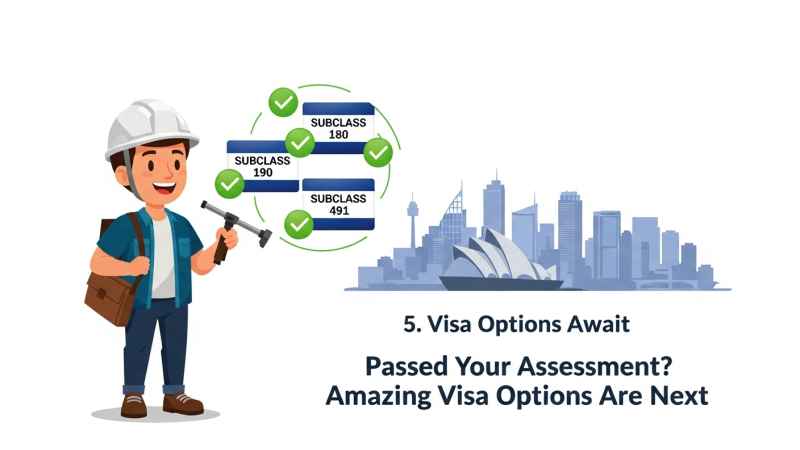
Once you have a positive skills assessment, you can apply for several points-tested skilled visas. The main options for an electrical draftsperson include:
-
Subclass 189 (Skilled Independent Visa): This is a permanent visa that does not require sponsorship by an employer or state. It is purely points-based. You must lodge an Expression of Interest and, once invited, you apply for PR. (The minimum pass mark is 65 points, though higher points are usually needed to actually receive an invitation.)
-
Subclass 190 (Skilled Nominated Visa): A permanent visa requiring nomination by an Australian state or territory. You submit your EOI, and if a state nominates you, you can apply for this PR visa. State nomination often requires higher points, but grants you additional points in the pool.
-
Subclass 491 (Skilled Work Regional (Provisional) Visa): A provisional five-year visa. It requires nomination by a state/territory or sponsorship by an eligible relative, and you must live/work in a designated regional area of Australia. This visa is valid for 5 years. It is not permanent, but after 3 years of regional residence (and meeting income and other conditions), you can apply for permanent residency via Subclass 191.
-
Subclass 191 (Skilled Regional (Permanent) Visa): This is the permanent residency visa that follows on from Subclass 491. After holding 491 (or 494) and meeting the residency/income requirements, you become eligible for 191, granting you PR.
In summary, the path usually goes: get your Engineers Australia outcome, lodge an EOI, and aim for a nomination/invitation in 189/190/491. Subclass 190 is a permanent visa with state nomination, while subclass 491 is a 5-year regional visa leading to PR (through subclass 191). Each visa has specific criteria, but they all require a positive skills assessment by EA for your occupation.
Who Can Apply for the Skill Assessment?
To be eligible to take the Electrical Draftsperson Skill Assessment, you generally need:
-
Educational qualifications: An Australian or equivalent associate degree, advanced diploma, or diploma in electrical/electronic engineering or a closely related field. In Australia this is typically an AQF Level 6–8 qualification. (If you only have a bachelor’s degree but not accredited, you may still apply via the CDR pathway.)
-
Work experience: A few years of hands-on experience in drafting or designing electrical systems is expected. Many applicants have 2–3 years of relevant work history before applying. In fact, ANZSCO notes that at least three years of relevant experience may substitute for formal qualification if needed. In practice, listing projects on your CDR will demonstrate this experience.
-
English language: Competent English is mandatory. This means an IELTS overall score of 6.0 (with at least 6.0 in each band), or equivalent on other tests. Make sure to submit your test results; scores are valid for 3 years.
-
CDR (if required): If your degree isn’t from an accredited Australian program or an Accord country, you will need to submit a full CDR (Career Episodes, Summary, CPD) as explained above. Even if not strictly required, providing a well-prepared CDR is highly recommended to score well in the assessment.
Documents You’ll Need
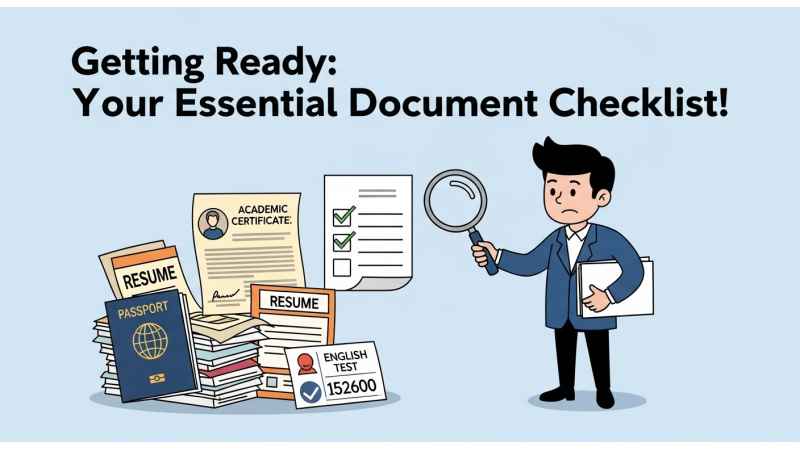
Before applying online via the Engineers Australia myPortal, gather these documents:
-
Identity documents: Passport bio page (with photo) and any national ID cards.
-
Academic certificates and transcripts: Your diploma/degree certificate(s) and full official transcripts of marks. If any documents are not in English, provide certified English translations.
-
Curriculum Vitae (CV/Resume): A detailed resume that follows the EA format. It should chronicle your education, work history, and relevant engineering projects. (EA will check that your resume supports your career episodes.)
-
English test results: Official scores for IELTS, TOEFL iBT, PTE, or OET, if applicable. These must meet the “Competent English” level.
-
CDR report: If using the CDR pathway, prepare your report (three Career Episodes, Summary Statement, and CPD list) as detailed below.
-
Proof of employment: Letters of recommendation or employment certificates on company letterhead, detailing your job duties and dates. Payslips or tax records can also support your experience claims.
-
Continuing Professional Development (CPD) record: A simple list of courses, workshops, seminars, or conferences you’ve attended since graduation. (This should be included in your CDR package, but you may submit it separately if EA requests.)
-
Other supporting docs: Any engineering licenses or certifications, projects samples, or additional awards that showcase your skills (optional but useful).
Once you have these ready, you’ll apply through the EA online system and pay the assessment fee (typically around AUD 410–950 depending on the pathway and date).
Understanding the Competency Demonstration Report (CDR)
If you are on the CDR pathway, your main task is to write a CDR that convincingly shows your drafting competence. As noted, the CDR has three Career Episodes, each focusing on a particular project or piece of work you completed. Think of each episode as a mini-case study: tell a story about a project, describe your role, the technical challenge, and how you solved it.
Each Career Episode should contain:
-
Introduction: Project title, dates, duration, the organization’s name and location, and your role (about 50–150 words).
-
Background: Context of the project – its goals, scope, and your responsibilities within the team (around 100–300 words). You should also describe the organization’s structure and the nature of the technical problem.
-
Personal Engineering Activity: The core part (roughly 500–1000 words). Here you must clearly explain what you did – for example, drafting the electrical layout, performing calculations, using design software like AutoCAD or ETAP, and solving specific problems. Be explicit about the skills and engineering knowledge you applied. Mention any technical standards, safety protocols, or innovative solutions you used.
-
Summary: Conclude with the outcomes – what you achieved or learned. Describe the results of your actions (e.g., “I improved energy efficiency by 15%” or “the system met all regulatory requirements”). Highlight what this episode taught you professionally.
Within these episodes, use first person (“I designed the circuit protection system by…”) so it’s clear these are your own achievements. EA emphasizes showing your contributions, not just what the team did. You must demonstrate that you actively applied your drafting knowledge and problem-solving, not just passively followed instructions. For each episode, tie your actions to the required competencies in the Summary Statement later.
In addition to the Career Episodes, your CDR must include:
-
Summary Statement: A matrix (usually in table form) that explicitly maps each competency element (listed by Engineers Australia) to specific paragraphs in your Career Episodes. This proves you have demonstrated each competency. A well-organized summary makes the assessor’s job easier.
-
Continuing Professional Development (CPD): A short list of any additional training or education (courses, seminars, certifications) you’ve completed since graduating. This shows you stay up-to-date in your field.
Be careful to not plagiarize any content – EA uses sophisticated plagiarism detection. Write everything in your own words. If you copy generic text (even from the internet), your CDR will be rejected. It’s better to describe your actual projects in plain English, highlighting the technical details and your role.
Tips and Common Mistakes to Avoid
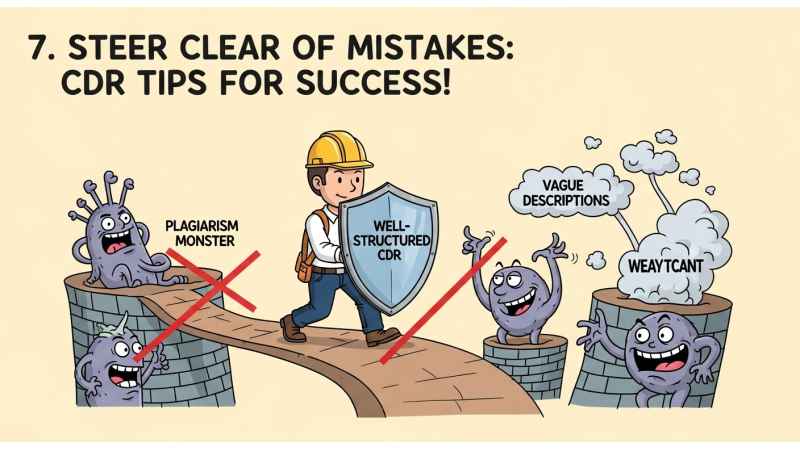
Writing a CDR can be daunting, but follow these tips to boost your chances:
-
Use clear, first-person language: Say “I designed” and “I calculated” rather than passive verbs. This makes it clear you personally did the work.
-
Stay technical and specific: Give concrete details (software names, design standards, calculations). Don’t write vague statements. Explain how you solved a problem, not just that you solved it.
-
Follow EA rules: Stick to the word limits (typically ~1200–1500 words per episode). Make sure you cover only engineering content relevant to the competency elements.
-
Don’t copy from anywhere: EA explicitly forbids plagiarism. Even if you find a sample CDR, use it only for inspiration, not for copying text.
-
Proofread carefully: Poor grammar or spelling can detract from your professionalism and clarity. A single well-written sentence is better than a poorly formed paragraph.
-
Be honest: Describe real projects and real actions. Invented stories or exaggerations may be caught and will hurt your credibility.
Common pitfalls to avoid include focusing too much on teamwork (remember to emphasize your role) and overloading theory (interweave practical descriptions). A balanced, clear, and factual narrative will make your CDR stand out.
Steps to Apply for Your Skill Assessment
When you’re ready to apply, follow these steps:
-
Check eligibility: Verify that ANZSCO Code 312311 appears on the relevant skilled occupation list for the visa you want. Confirm you meet the qualification and language requirements.
-
Gather documents: Collect all ID, education, and work documents listed above. Order them in a single PDF if possible (the EA portal lets you upload docs electronically).
-
Take an English test: If not already done, schedule IELTS/TOEFL/PTE and aim for at least 6.0 in each category (or equivalent).
-
Prepare your CDR: Write your three Career Episodes, Summary Statement, and CPD list. Follow the EA guidelines carefully (you can refer to our articles on [CDR for Electrical Engineer Australia] and [Career Episode Report Electrical Engineer PDF] for examples and structure). Have a colleague or mentor review it if possible.
-
Apply online: Create an account in EA’s myPortal, select the CDR pathway, and submit your application form along with all documents and the application fee.
-
Wait for the result: Processing can take 8–12 weeks on average, though a paid Fast Track option may give results in about 4 weeks. EA will review everything and notify you of the outcome.
Staying organized and following the exact instructions can prevent delays. EA provides an online application guide listing required documents and tips. Make sure you double-check that you’ve included all needed evidence before submitting.
Professional Help and Additional Resources
Writing a perfect CDR can be challenging. Many applicants choose to get expert assistance to avoid mistakes. Professional CDR writing services (like the team at CDRFOREA) can help you craft unique Career Episodes and check your report against EA’s criteria. If you feel unsure, consider consulting specialists who know the EA requirements well.
For more guidance, see our related articles on the CDRFOREA site, such as [CDR for Electrical Engineer Australia] for CDR writing advice and examples, and [Career Episode Report Electrical Engineer PDF] which explains how to structure your career episode reports step-by-step.
Frequently Asked Questions
Do I need work experience? While no minimum experience is strictly required, having real drafting or engineering experience (2–3 years) greatly strengthens your application. It gives you concrete projects to write about in your CDR.
How long is the assessment processing time? Usually 8–12 weeks. EA also offers a Priority (Fast Track) service, which can deliver results in about 20 working days for an extra fee.
Can I write my own CDR? Yes, but make sure it fully meets Engineers Australia’s strict guidelines. Many applicants choose to get a professional review, since EA is very particular about format and content.
How much does the skills assessment cost? It varies by year and pathway, but typically it’s in the range of AUD 450–950. (Check Engineers Australia’s website for the current fees.)
Is passing EA enough for immigration? Passing the Engineers Australia skill assessment is necessary to apply for skilled visas like 189, 190 or 491, but you will also need to meet the Department of Home Affairs requirements (points test, health/character checks, etc.).
Final Thoughts
Passing the Electrical Engineering Draftsperson Skill Assessment opens the door to living and working in Australia. With the right preparation, your strengths will shine through. Make sure your CDR is well-structured, personal, and error-free, and don’t hesitate to seek help if needed. A strong skills assessment result is the key to moving on to the visa stage, where a new career and life await.
Be proactive and avoid the common pitfalls – use this guide (and our CDR writing expertise) to get it right. The journey to Australia requires effort, but the reward of engineering opportunities and a new lifestyle is well worth it. Good luck on your assessment, and we look forward to welcoming you as an electrical engineering professional in Australia!
